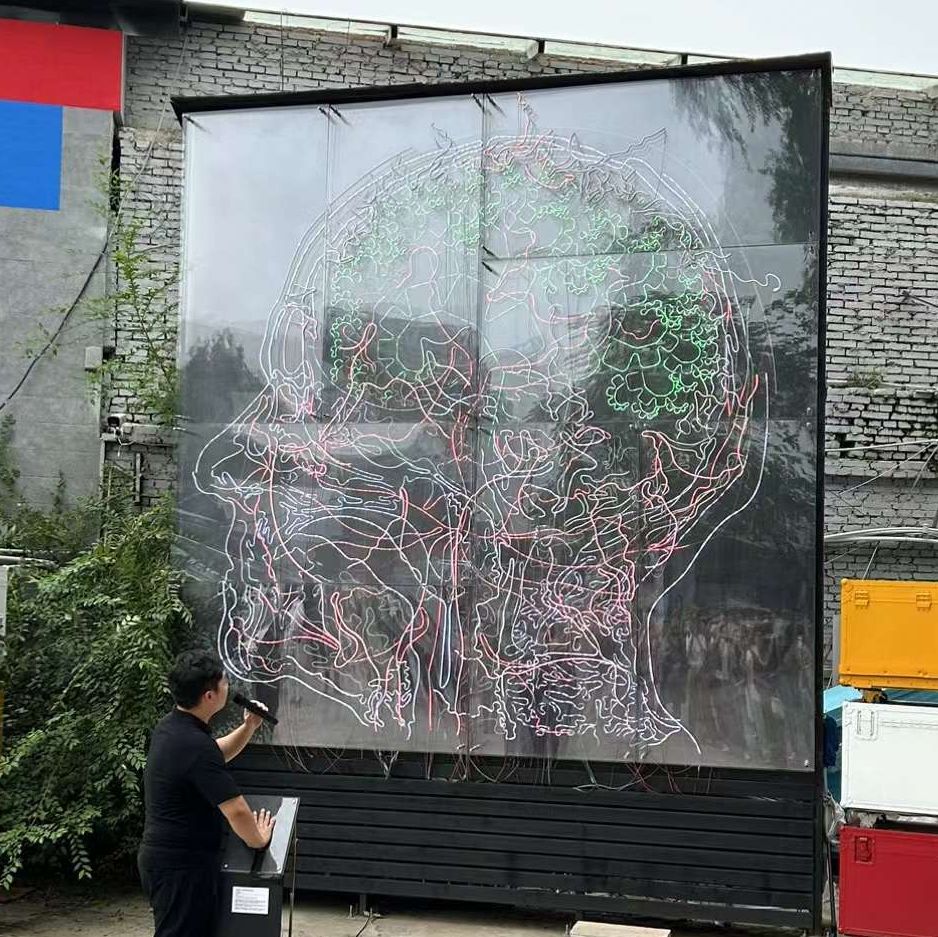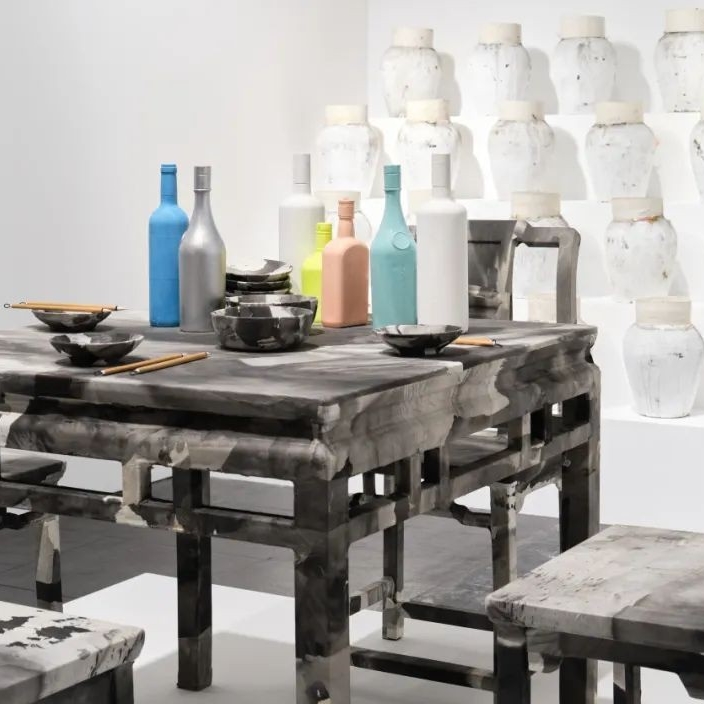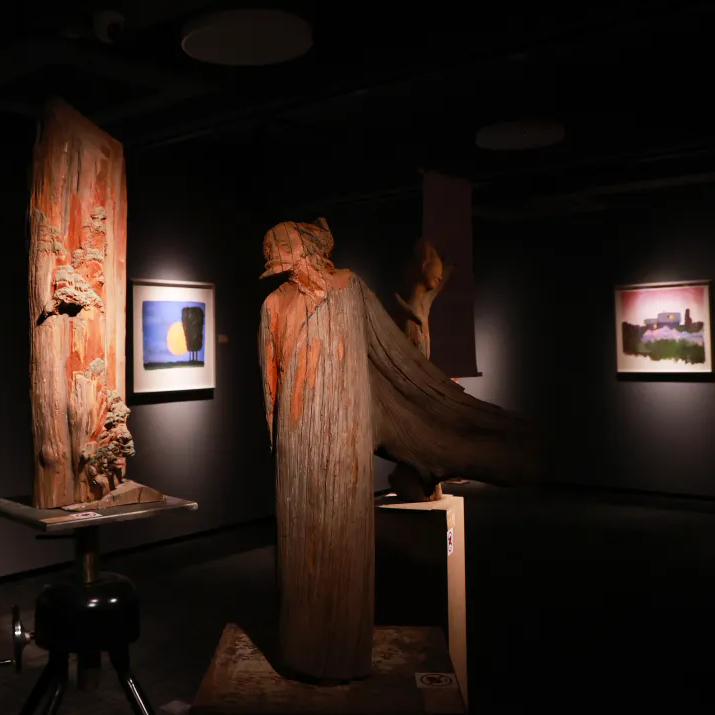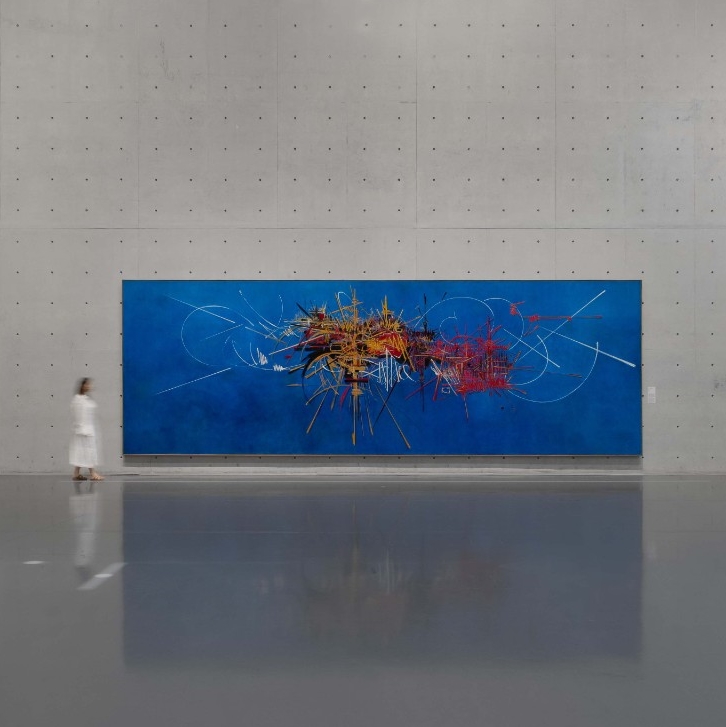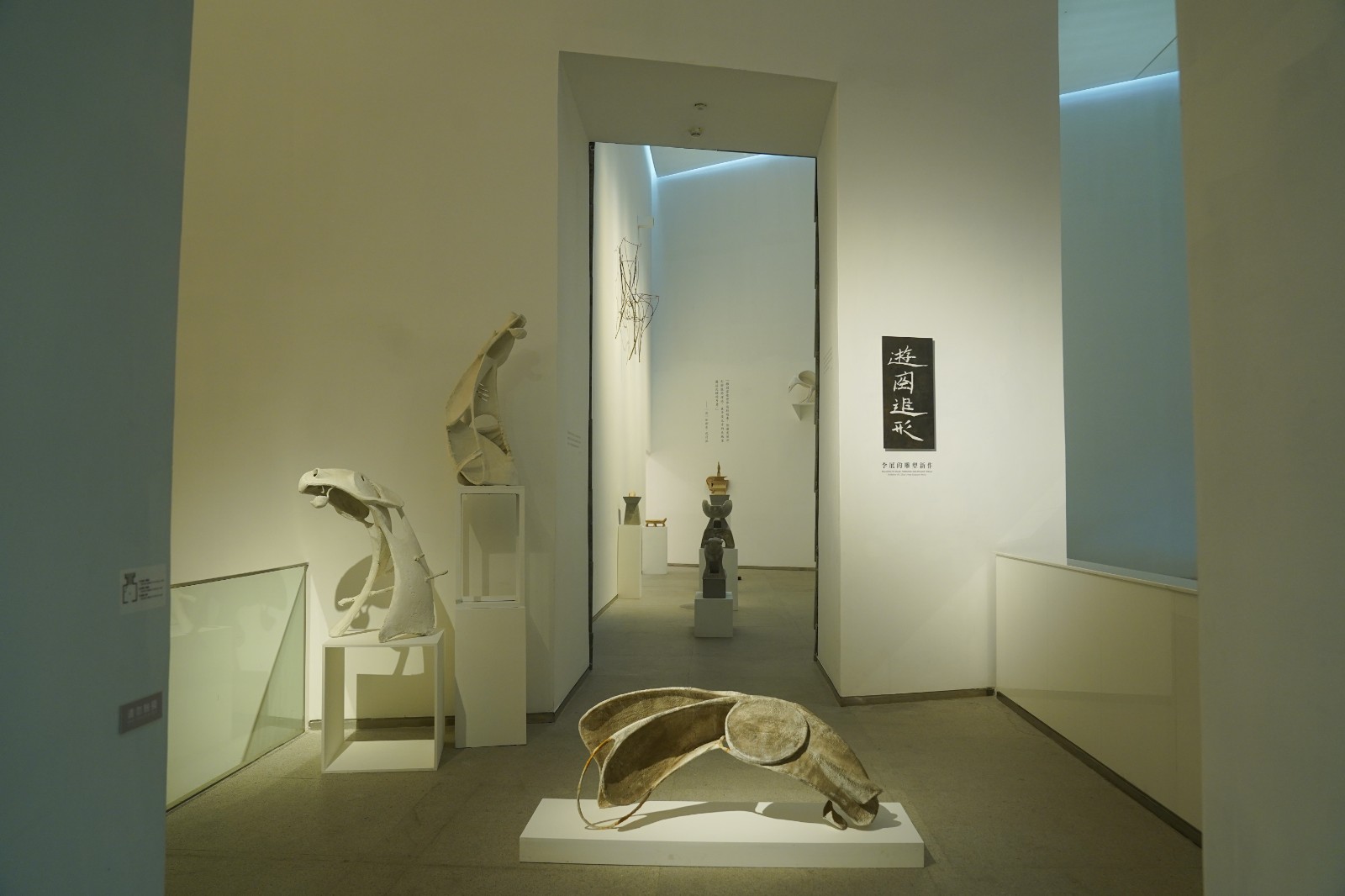
Exhibition View
On March 6, 2023, “Expand + Curate: Young Experiment Project Space” ushered in the fourth project of its second phase: “Roaming in Space, Pursuing Significant Forms: Exhibition of Li Zhan’s New Sculpture Works” at CAFA Art Museum.
Featuring thirty works, the exhibition presents the artist’s thinking on sculpture creation in recent years, covering his creations since 2013, with a special focus on his creative stage from 2018 through to the present. Themed on “Roaming in Space, Pursuing Significant Forms,” the exhibition unfolds how the artist tries to advance the experiment on the ontological language of sculpture art by exploring the relationship between the internal space and the external space of sculpture, as Li Yaochen, the curator for this exhibition mentioned in his speech on the opening ceremony.
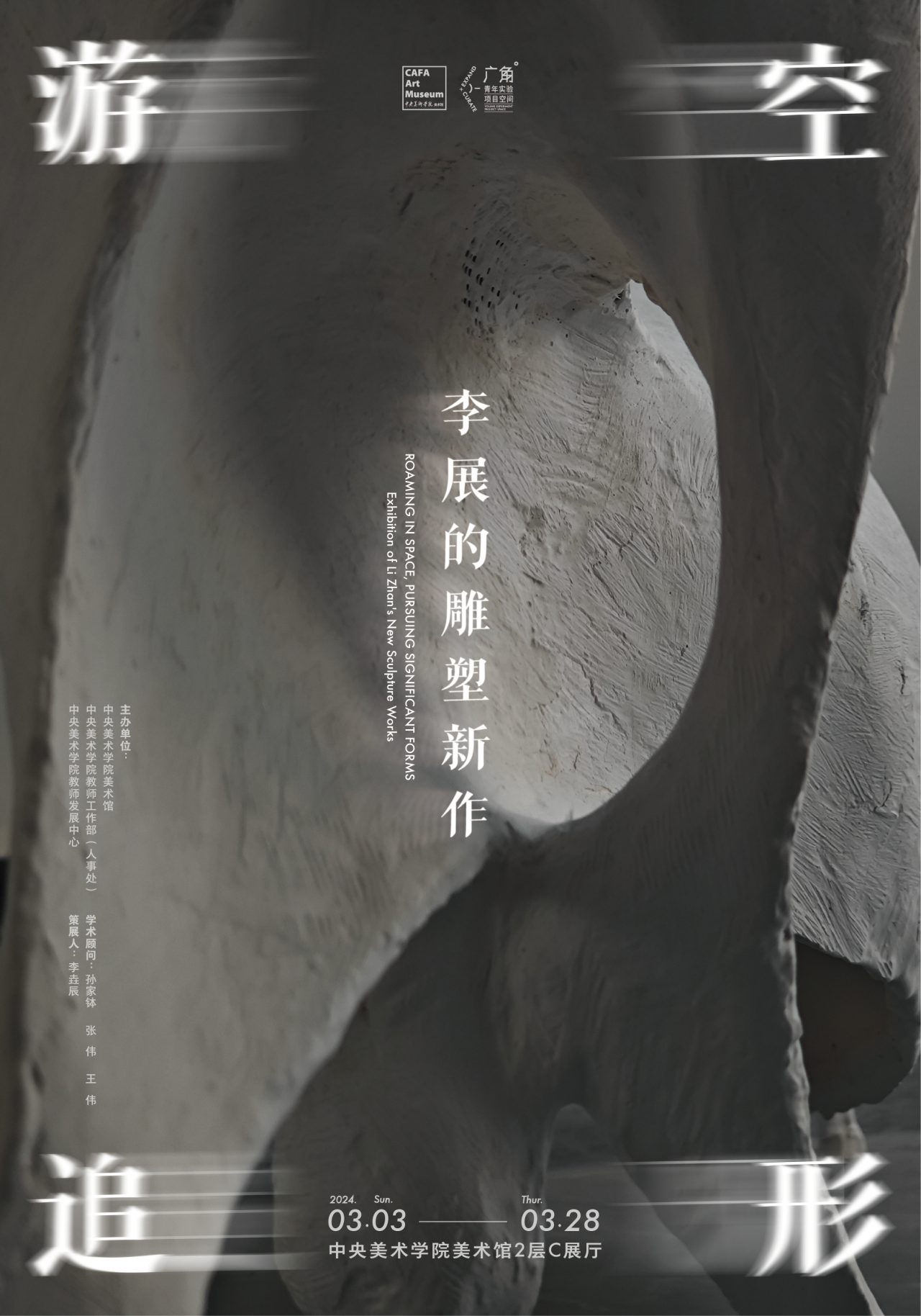
Exhibition Poster
The earliest work included in the exhibition was created by Li Zhan in 2013, which also marks a new stage of his exploration. It is closely related to the “Mask” that was created by Li Zhan in 2015. In the process of shaping the bull’s head which still tends to be more representational, the artist realized how to endow the work with a richer sense of space, and thus gradually opening up the inner space of the work.

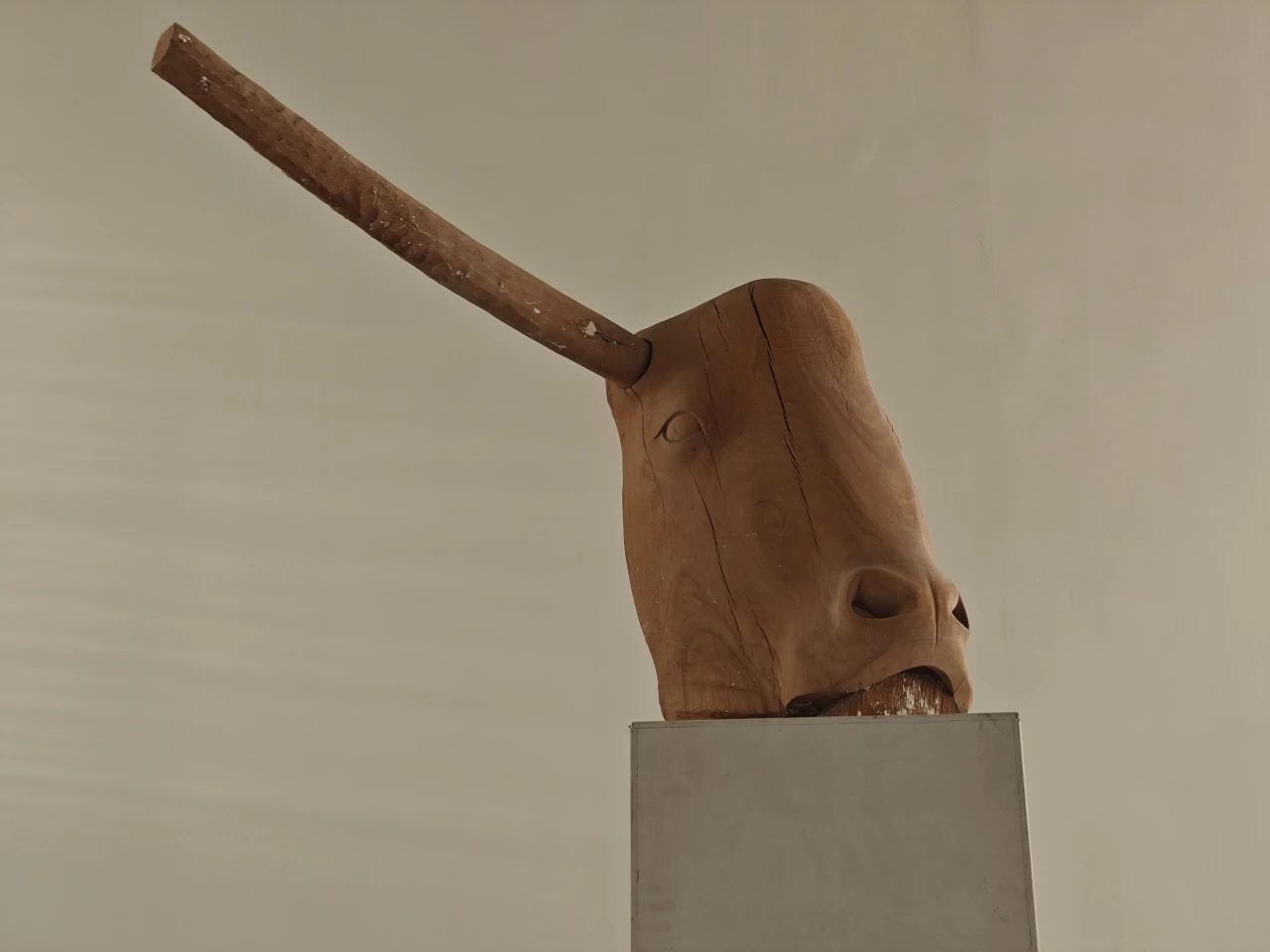
Li Zhan, Mask, 44x105x72cm, camphor wood, 2015
Meanwhile, Li gets inspired by traditional Chinese utensils and keeps thinking about how to navigate the positive and negative space of sculpture. “Originally, when we created representational sculptures, we usually only focused on the ‘appearance’ on the outside and ignored the considerations inside the space. While those who make utensils and design architecture tend to think more about internal space, I think sculptors can also think in this way.” Therefore, Li Zhan has tried to fill the creative thinking that may still be absent from the traditional sculpture teaching system. How to open up the relationship between the inside and outside of sculpture and form a richer spatial relationship and tension has become the key of Li Zhan’s research on the ontology of sculpture art in recent years.
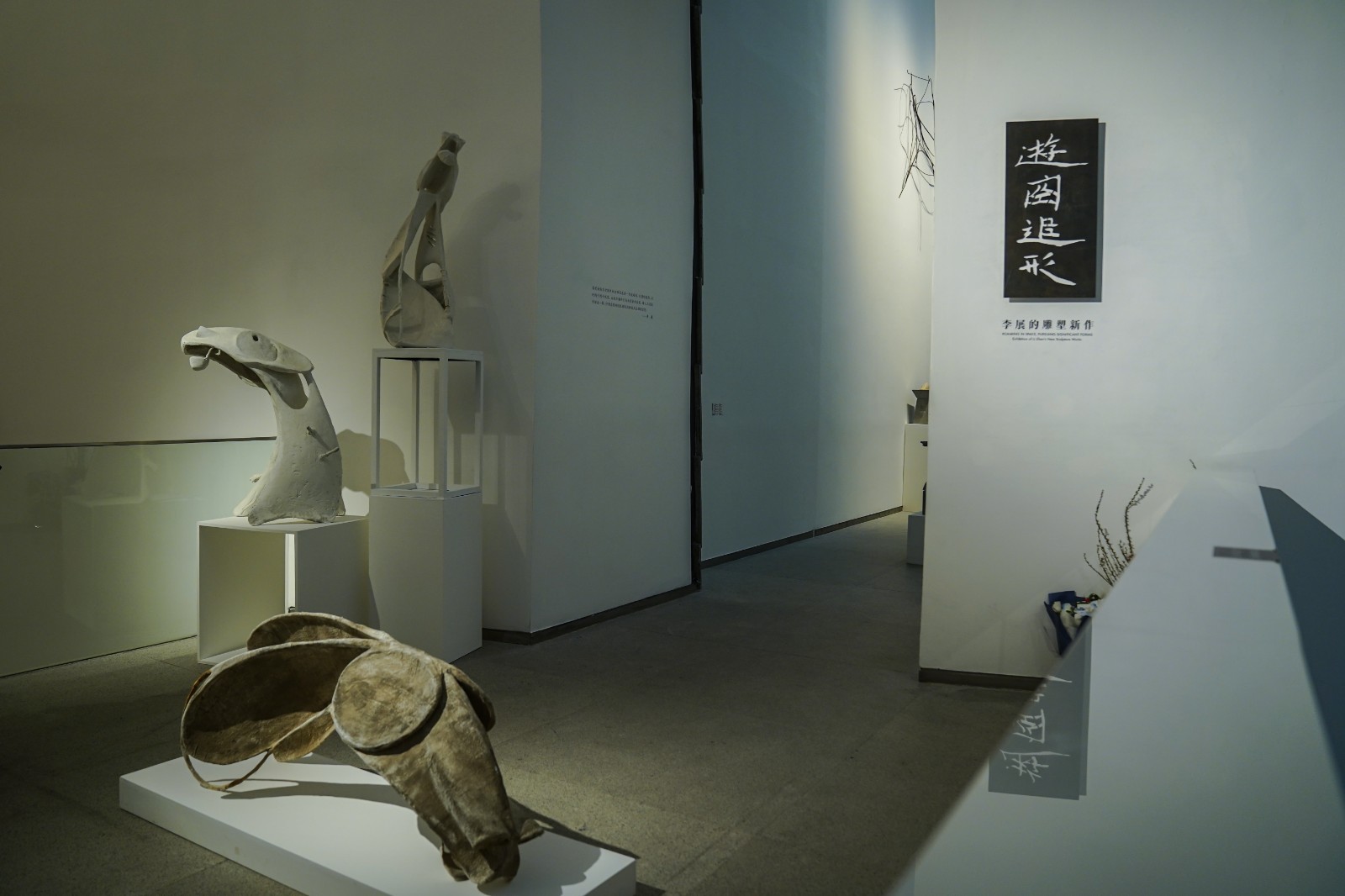
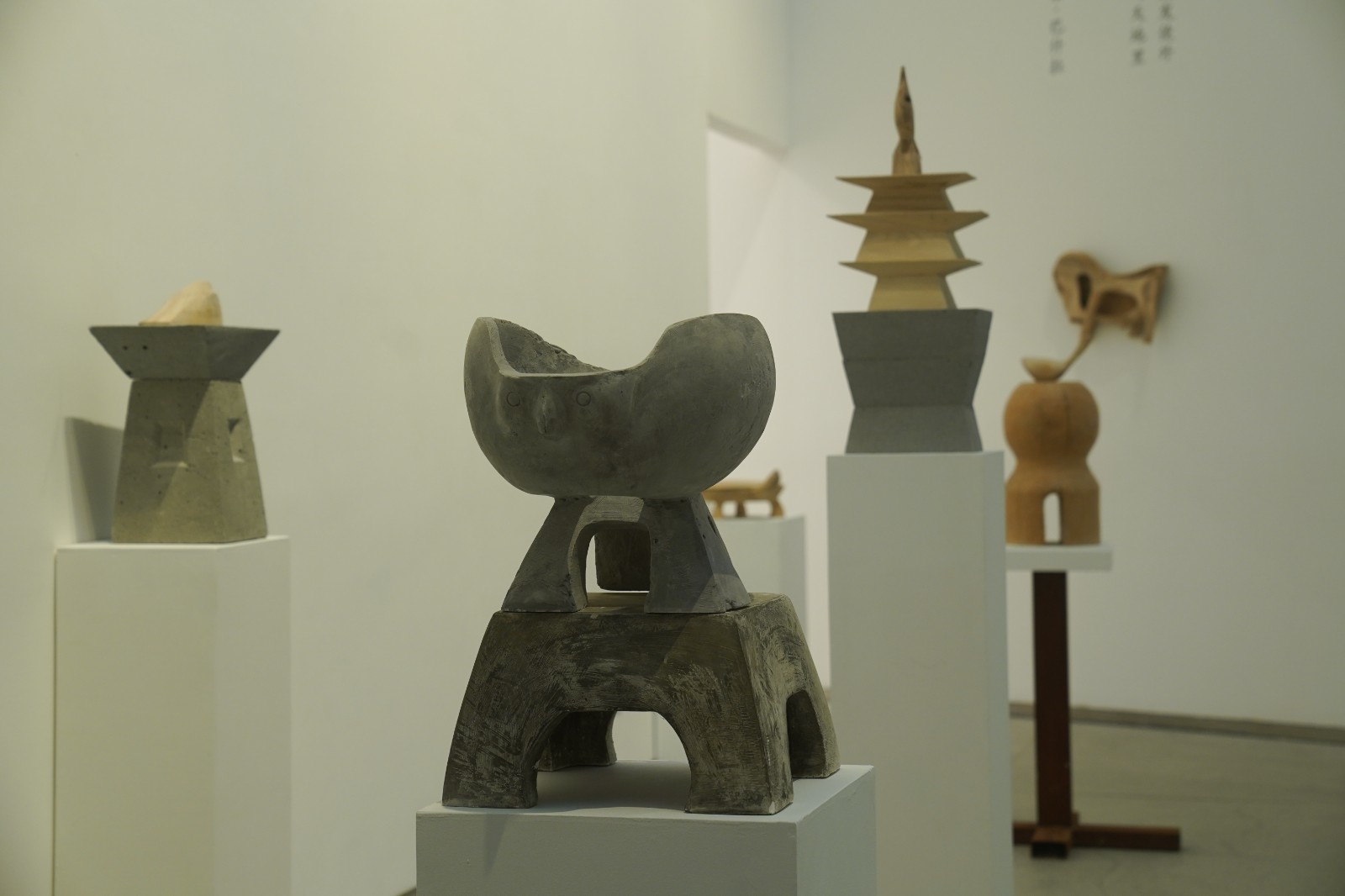
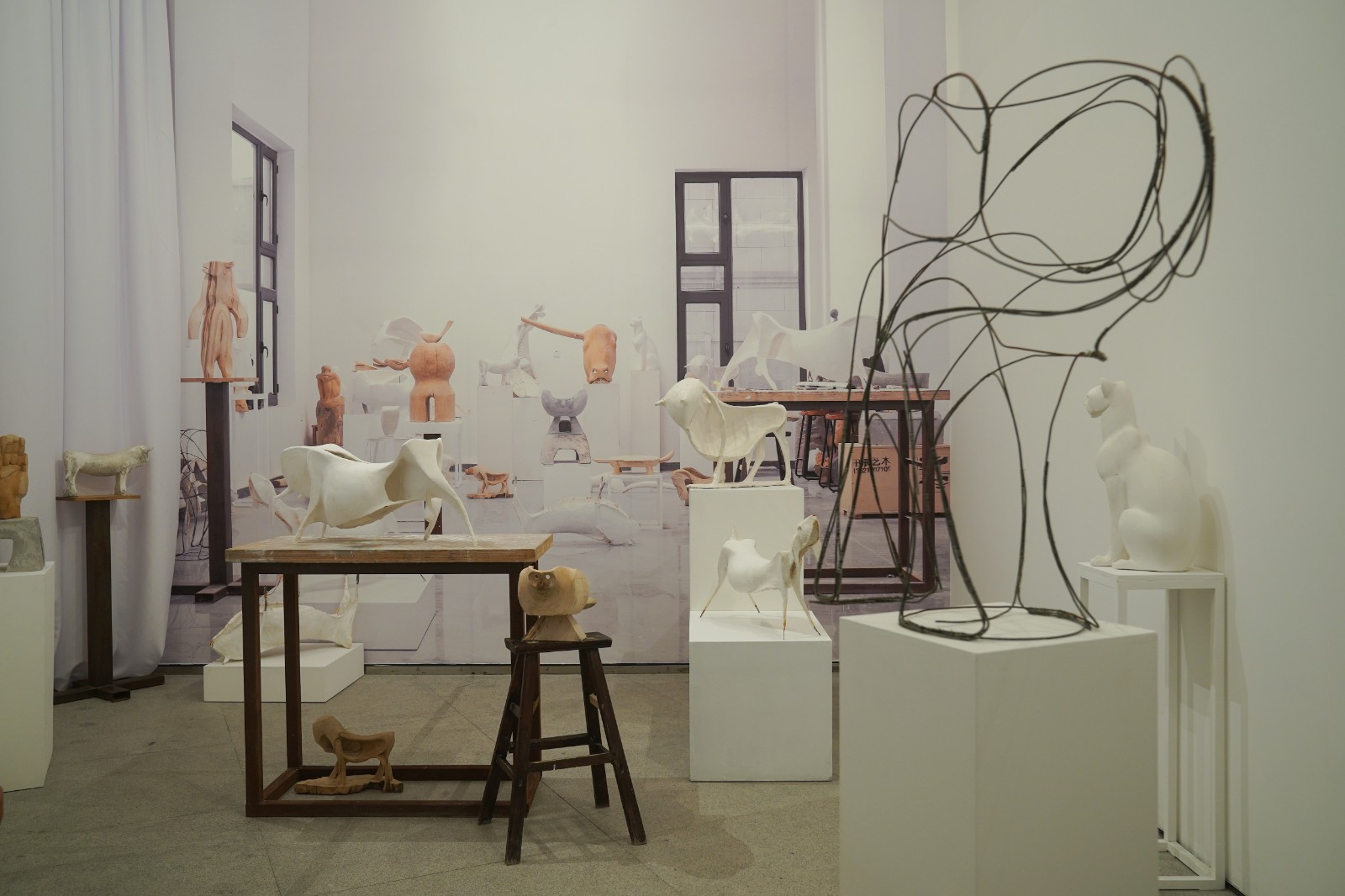

Exhibition View
Li Zhan has also begun to adopt more approachable materials, such as wire, plaster, bandages, etc. in recent years. He is not particularly keen on using precious materials or permanent materials to endow his works with more commercial value, and these materials he applies can provide him with ideas to get rid of the material limitations of sculpture, and he make a breakthrough in some thinking limitations of traditional sculpture creation. Through these cheaper and more applicable materials, he can enrich his modeling language and further break the monotonous and solid state of wood carving.
“Whether it is a more traditional material, such as wood, or a more available, low-cost material, such as foam bricks and other materials originally used as building materials, as long as they fit with my creation, I can use them. When I want to make a square base, it is easier to realize my ideas with foam bricks. Just like iron wire and plaster can help me try to create a thin and curved ‘shell,’ then these materials are closely related to my creative objective.”
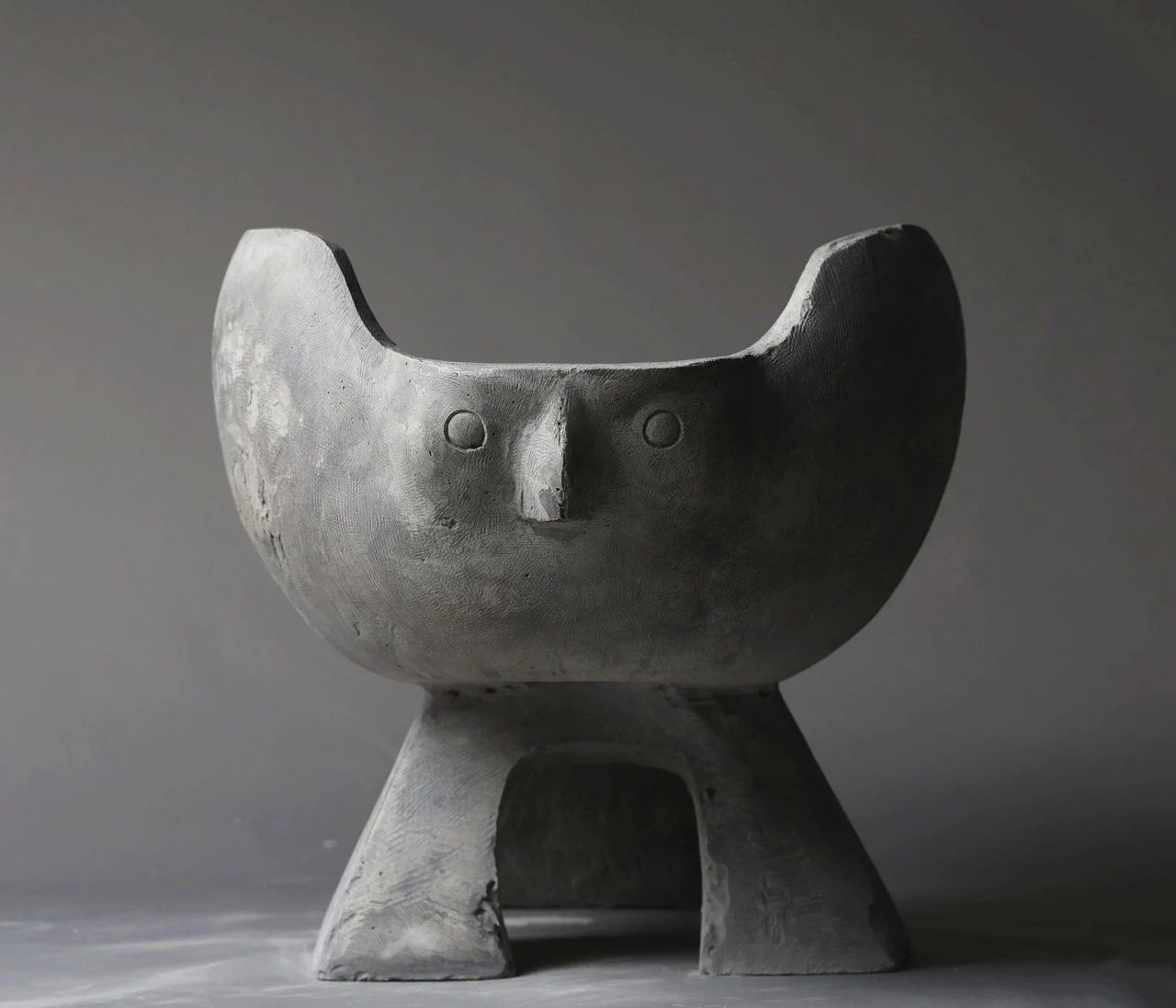
Li Zhan, Owl-shaped Tripod, 62x42x64cm, plaster, wire, ink, 2018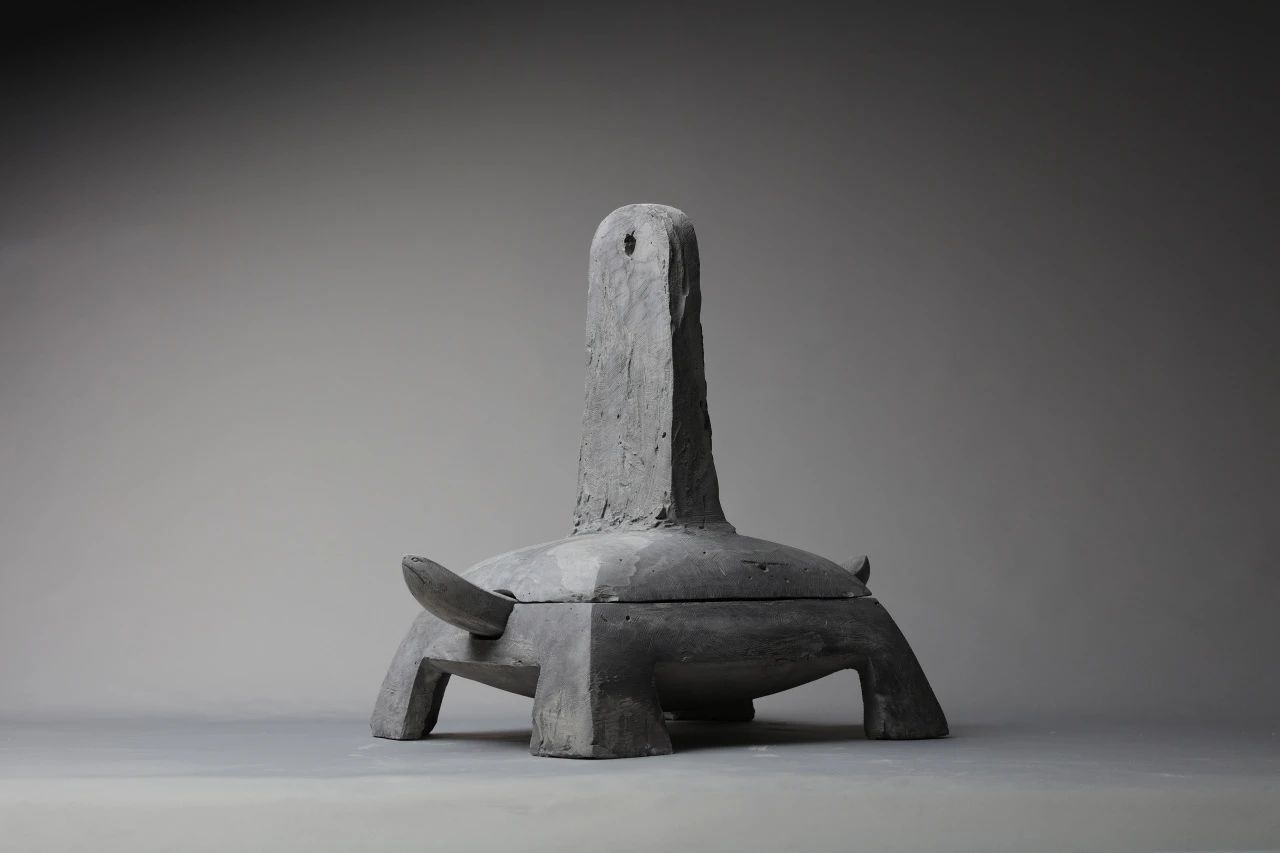 Li Zhan, Altar, 53x36x48cm, plaster, wire, ink, 2018
Li Zhan, Altar, 53x36x48cm, plaster, wire, ink, 2018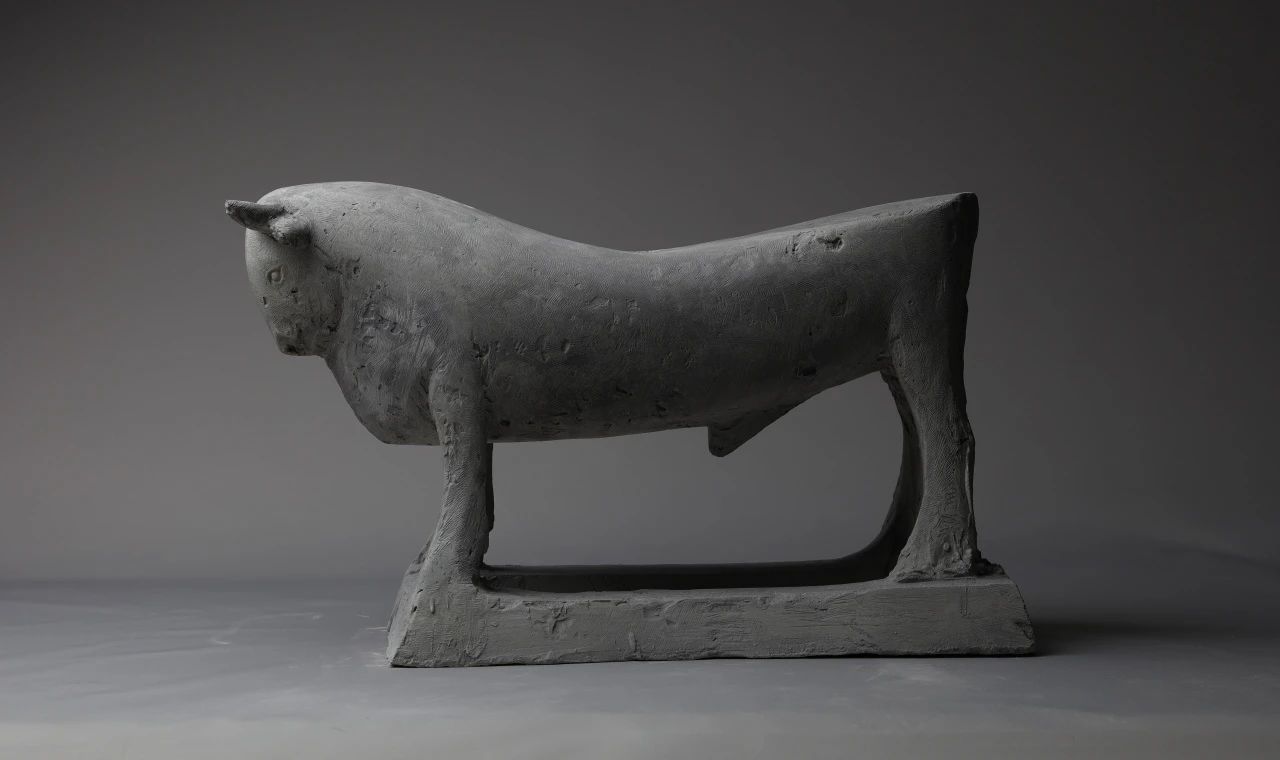 Li Zhan, Sacrifice, 26x78x45cm, plaster, wire, ink, 2018
Li Zhan, Sacrifice, 26x78x45cm, plaster, wire, ink, 2018
Li Zhan’s interest in exploring ontology language is probably related to his educational background. Graduated from the Sculpture Department of the Central Academy of Fine Arts, Li Zhan currently teaches in the First Studio of the Sculpture Department of the Central Academy of Fine Arts. “In teaching, the First Studio guides students to pay more attention to and study the ontological language of sculpture and explore the basic laws of sculpture. Whether it is sculpture or painting, it cannot simply be distinguished by superficial concepts such as representation or abstraction. My individual creations actually start from the path of studio research, and I have gradually integrated various basic technical training into my thinking, from which I chose and formed my expression,” said Li Zhan.
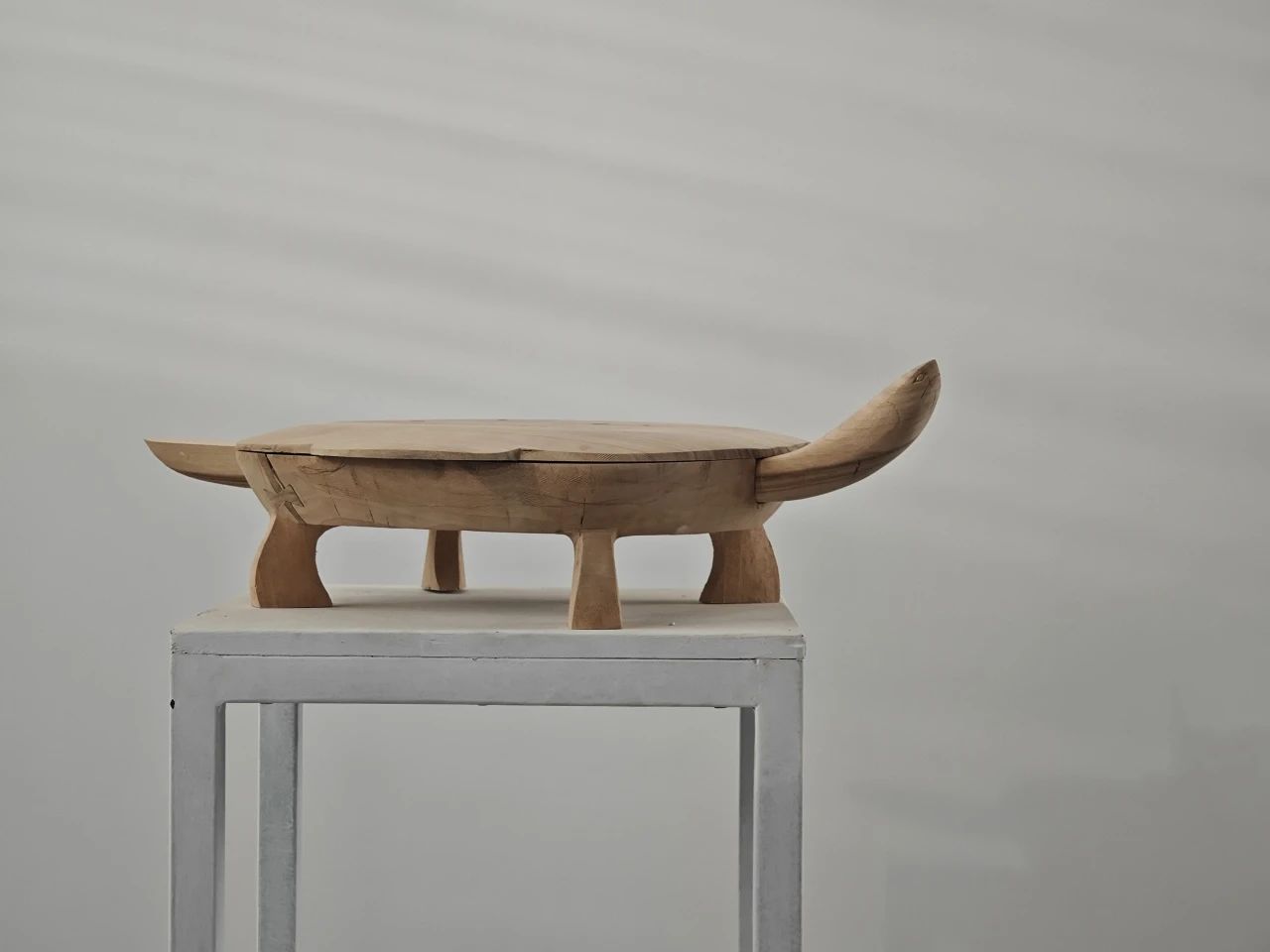
Li Zhan, Turtle-shaped Ladle, 64x37x18cm, camphor wood, 2022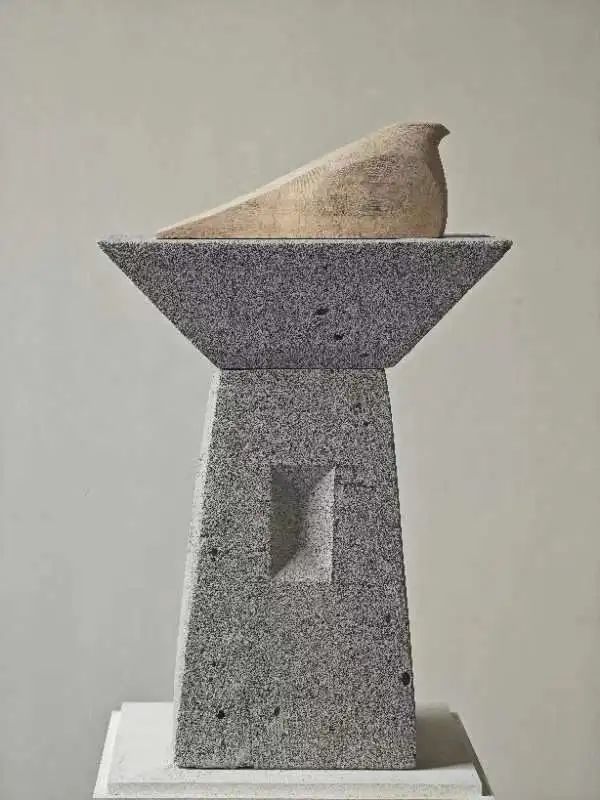 Li Zhan, Sparrow, 30x30x33cm, camphor wood, 2023
Li Zhan, Sparrow, 30x30x33cm, camphor wood, 2023
Being fond of traditional Chinese architecture and old objects, Li Zhan also realized that the transformation of tradition should not be limited to the superficial expression of visual symbols. Specifically, it is more about how to understand the creative thinking of the unknown craftsmen who make traditional utensils, “They did not only think about creation from the appearance, which can also help them stay away from the limitations of naturalism to a certain extent, and they explore construction methods to transform nature from functional considerations, thus come into contact with the essential factors of plastic arts such as volume, dimension and other considerations for the connection between internal and external space. These are exactly the artistic tensions that sculptures particularly need. Once they fall into naturalistic reproduction and imitation, their creations are easily weakened and eliminated. This is also what I keep thinking about in my works,” said Li Zhan.
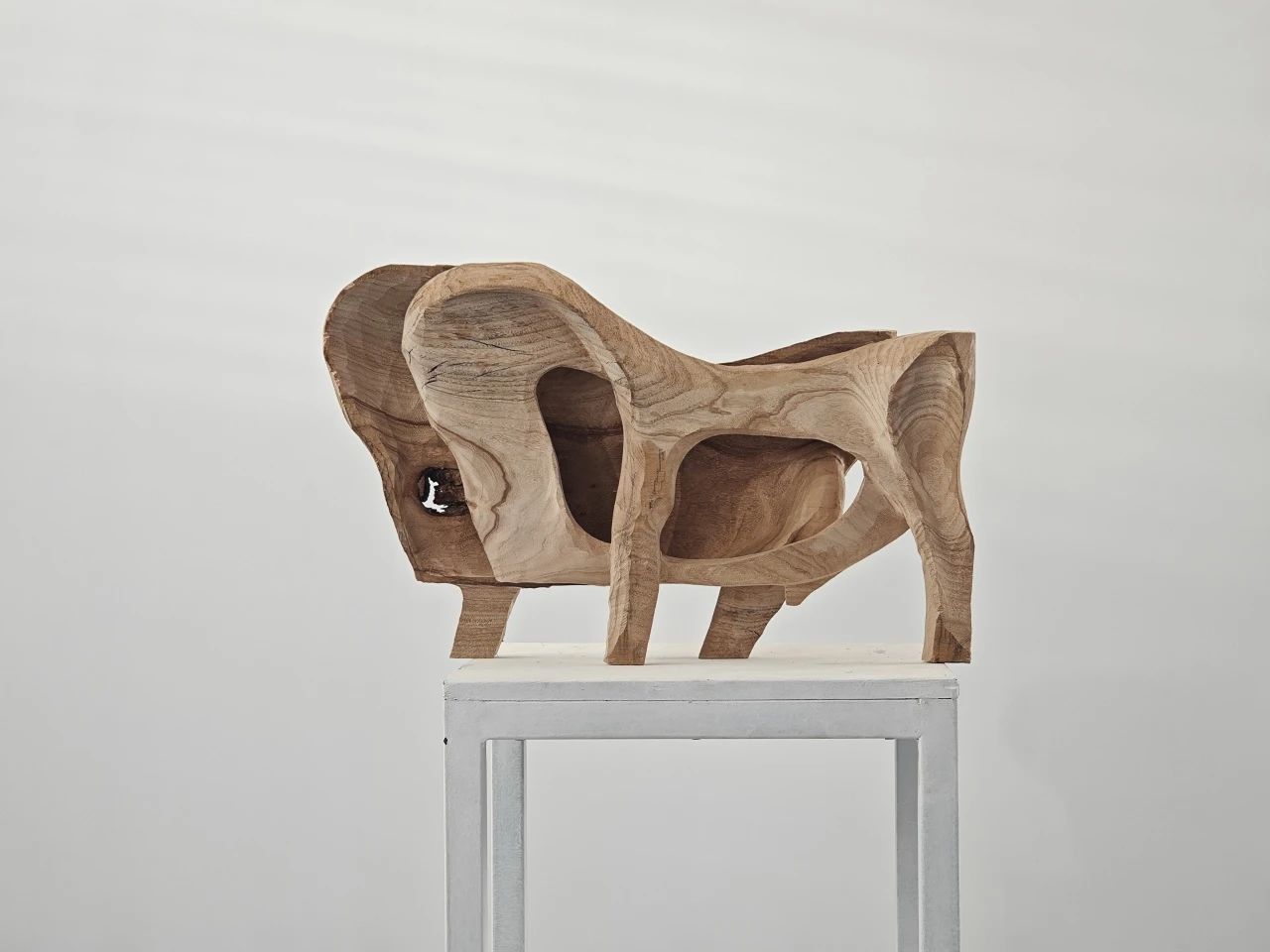
Li Zhan, Body, 10x50x33cm, camphor wood, 2022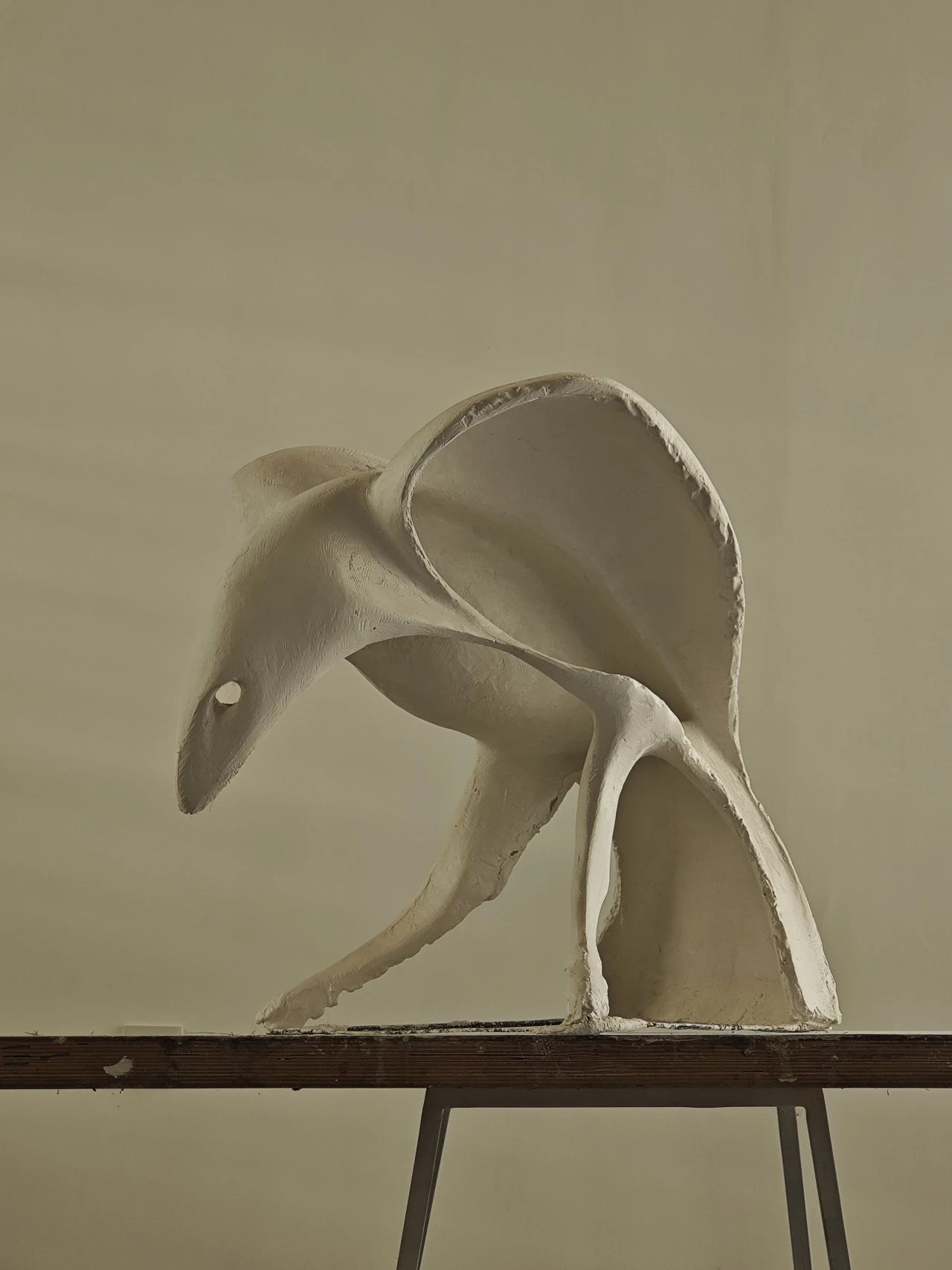 Li Zhan, Jackdaw, 75x50x65cm, plaster, wire, plaster gauze, 2022
Li Zhan, Jackdaw, 75x50x65cm, plaster, wire, plaster gauze, 2022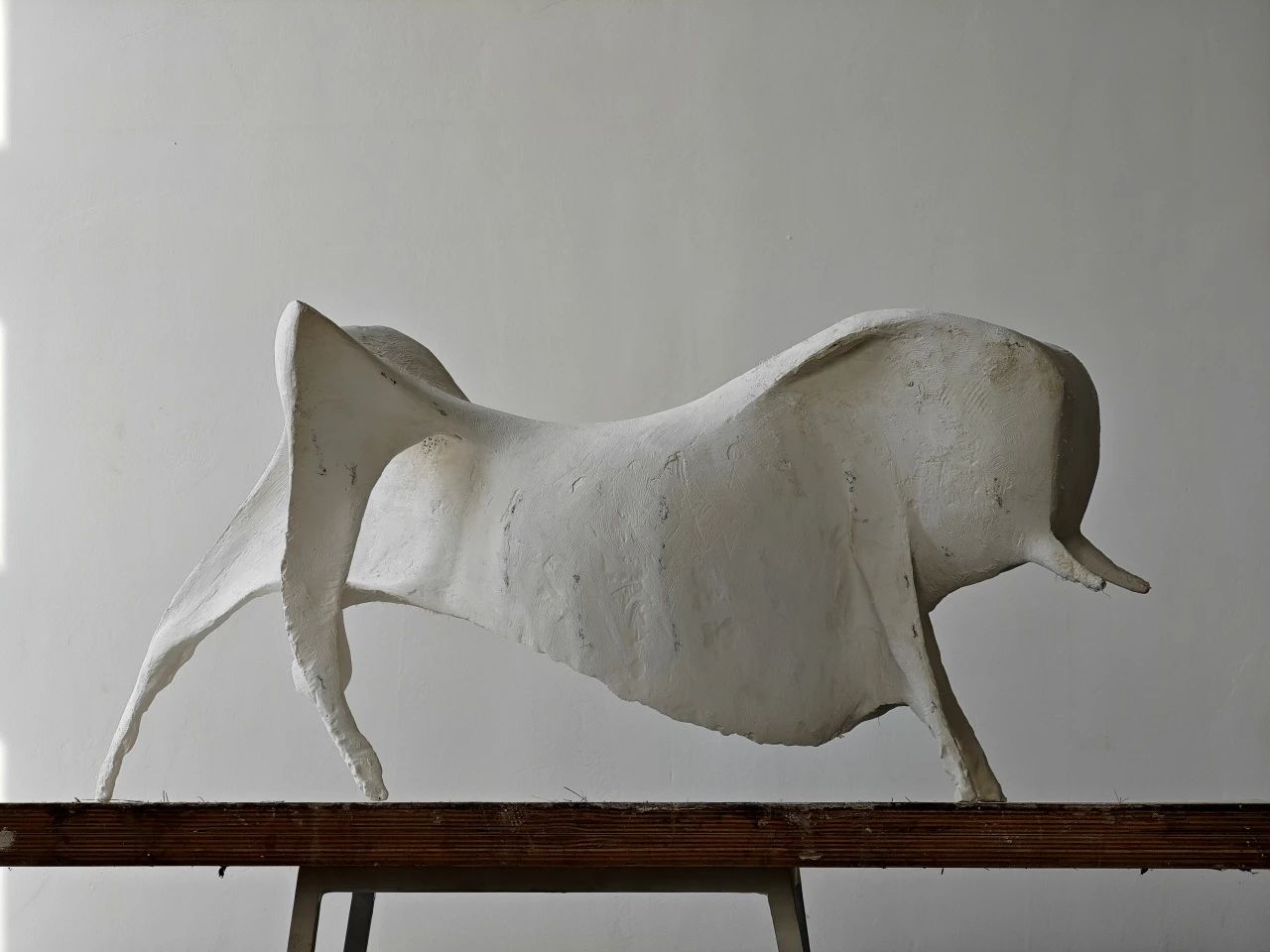 Li Zhan, Si (Female Rhinoceros), 28x94x43cm, plaster, iron wire, plaster gauze, 2024
Li Zhan, Si (Female Rhinoceros), 28x94x43cm, plaster, iron wire, plaster gauze, 2024
Similar concepts can also be found in the Li’s essay of “Flowing Space: The Inner Logic of Sculptural Language.” From the perspective of practitioners and the “flowing space”which reminds a certain essential concept of sculpture, the beauty of sculpture does not exist in the “screenshots” of frozen fragments, but “feeling all the information of an object in the space is a flowing and advancing process, and it is a result of time acting on vision and then generating a scene in the mind. Just like a person wandering in the landscape, no fragments of memory can constitute the entire space.” As the “Roaming in Space, Pursuing Significant Forms” quoted the French philosopher Gaston Bachelard, a sculptor can make the world work, he inspires theories that inflate the form, activating dormant power in the ordinary world.
The exhibition will remain on view until March 28.
Image Courtesy of the Artist, edited by CAFA ART INFO.


